Street scene in Tehran, 1976. Bruno Barbey / Magnum
The biggest protests in years are taking place in Iran. Women fight against the regime and the compulsion to veil themselves. The headscarf has been a political issue since the Shah’s time – back then because he banned it. A look back.
Iranian women’s hair has been telling the story of the country’s political and religious infighting for 86 years. Who is allowed to see them, who is not? The Shah Reza Pahlavi deprived Iranian women of the freedom to decide for themselves. He wanted to modernize his empire, traveled to Turkey, where he had Atatürk explain the policy of the rigorous westward course to him. They agreed that Islamic clothing is a symbol that contradicts modernization. The Shah, who ruled in an authoritarian manner, banned the headscarf in 1936.
For many Iranians, this was an attack on their values. In Persia, where Shia Islam (Twelver Shia) has been the dominant religion since the 16th century, women wore the veil because they believed in it and because it was part of the culture. The headscarf ban therefore meant less freedom for many: some families did not want their daughters and mothers to leave the house unveiled; and there are stories of women who didn’t dare go out on the street for years because they felt too exposed without a headscarf.
When the Shah abdicated in 1941, some Iranian women demonstratively covered their hair again. The headscarf was also a symbol against the west course.
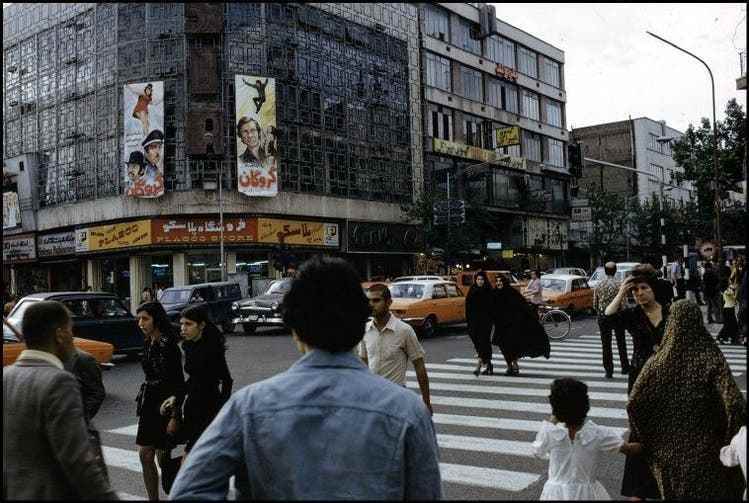
Tehran, 1976.
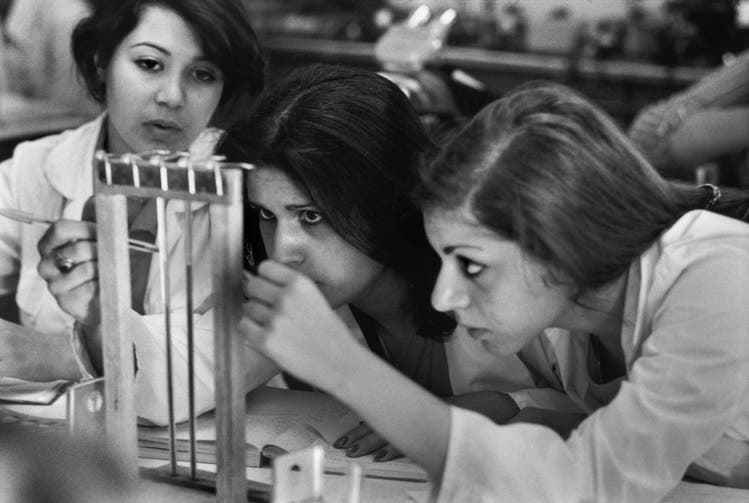
Daughters of predominantly western-oriented families studied at the university, where women and men were taught together. Photo: University of Tehran, 1977.

Iranian women enjoy life in Tehran in 1976.
The new ruler, the Shah’s son, continued to pursue a course of Western modernization, but the ban on the headscarf disappeared. Iranian society began to split: an upper class oriented itself towards Europe and lived in prosperity, while life remained hard for the broader population. The new Shah failed to convince traditional families of his policies. Modernization was particularly difficult for the great masses who lived in poverty.
Secular families sent their daughters to universities, but conservative parents struggled with the idea of women and men sitting close together in the classroom, and what they saw as revealingly clothed.
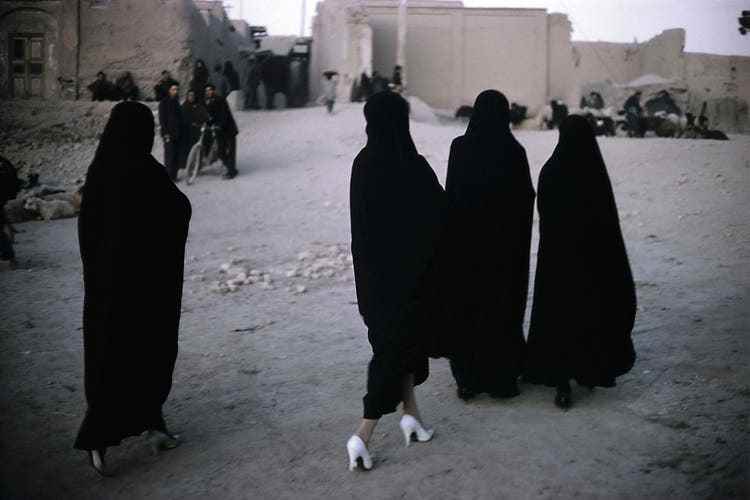
Iran, 1964: A broad section of the population rejected the policy of modernization. Religion was important to them.
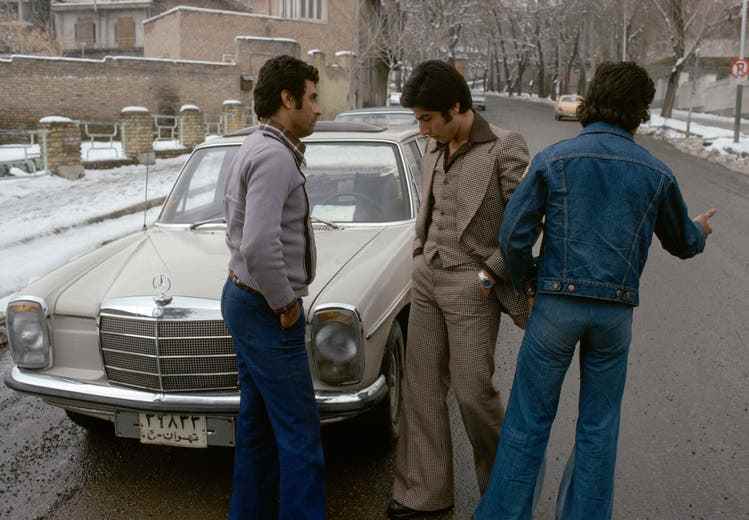
Western clothes were considered a symbol of modernization in Iran. Tehran, 1976.
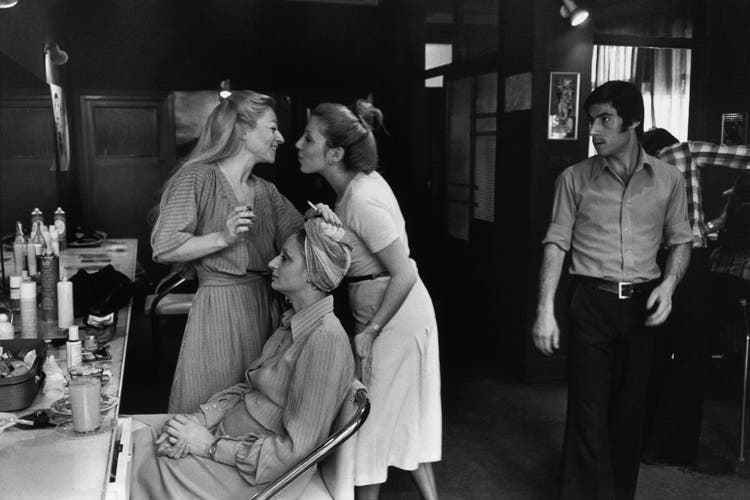
The upper class had a good time: a beauty salon in Tehran, 1977.
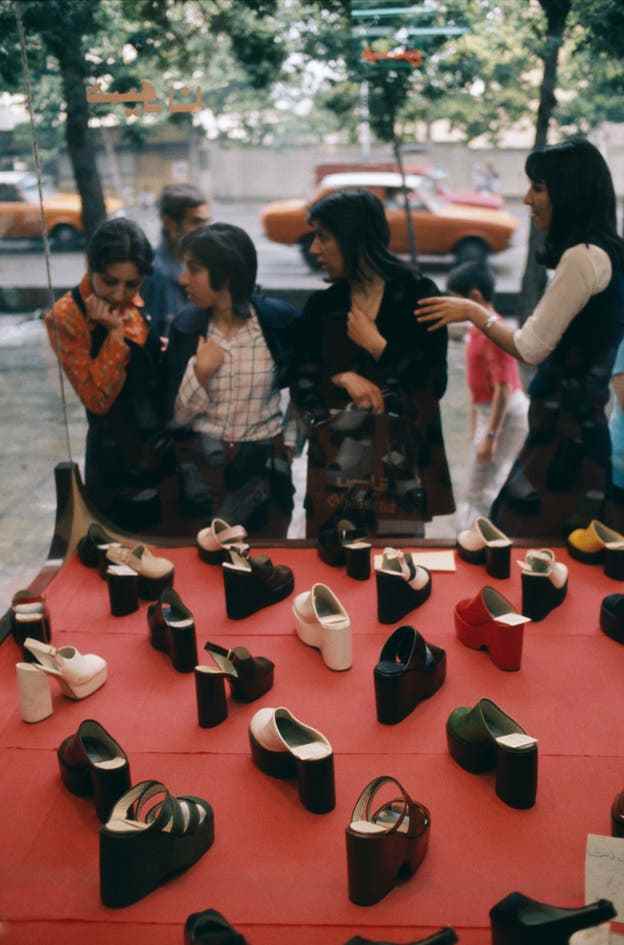

Side by side, but rarely together: After the Second World War, Iranian society began to split. Photos: Tehran, 1976.
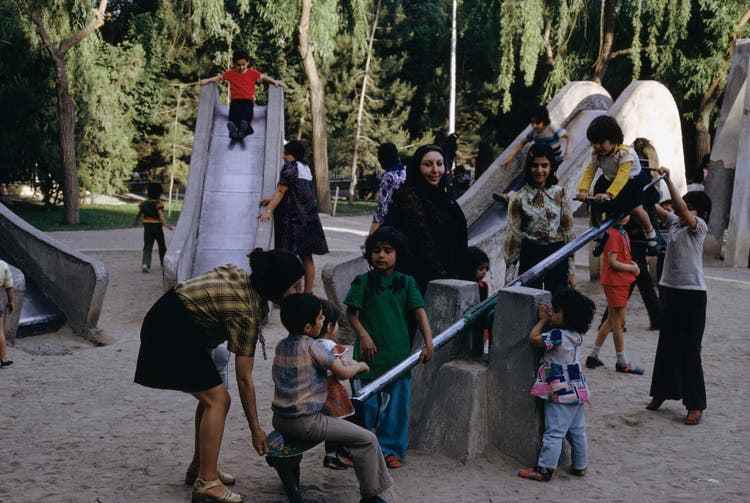
A public playground in Tehran, 1976.
From 1978 onwards, Iranians repeatedly protested against the government. The revolution began. The Shah left Iran on January 16, 1979, and shortly thereafter Ayatollah Khomeiny returned from exile in Paris. Millions gave the cleric a triumphant welcome when he landed in Tehran on February 1, 1979.
The supporters of the Islamic revolution came from all walks of life. The women who played a key role in the coup had had enough of the brutal regime, of living in poverty, of foreign influence. The Iranians united in their rejection of the Shah’s regime, but their ideas for life afterward could hardly have been more different. This was particularly evident in the headscarf.
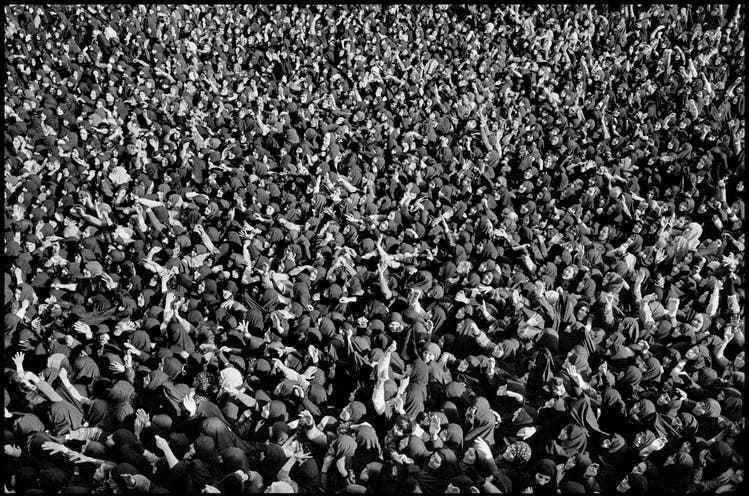
Thousands of Iranian women gathered in Tehran in February 1979 to welcome the cleric Khomeiny.
For conservatives, the hijab was a symbol of the Islamic revolution. He enabled many Iranian women from traditional circles to participate more in social life and to continue their education. For many others, the piece of cloth became a symbol of oppression. They were looking forward to celebrating International Women’s Day on March 8, 1979, but instead heard Khomeiny give a speech saying that women must now wear headscarves.
Thousands took to the streets and shouted, “We didn’t have a revolution to go backwards.”
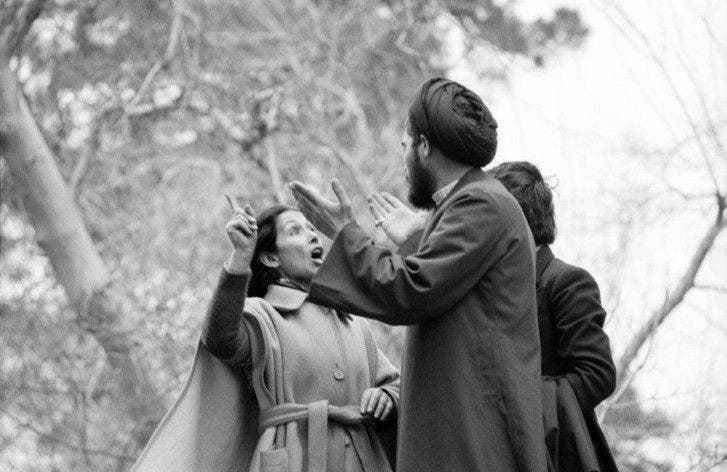
An Iranian woman at the demonstration against the headscarf in Tehran on March 8, 1979.
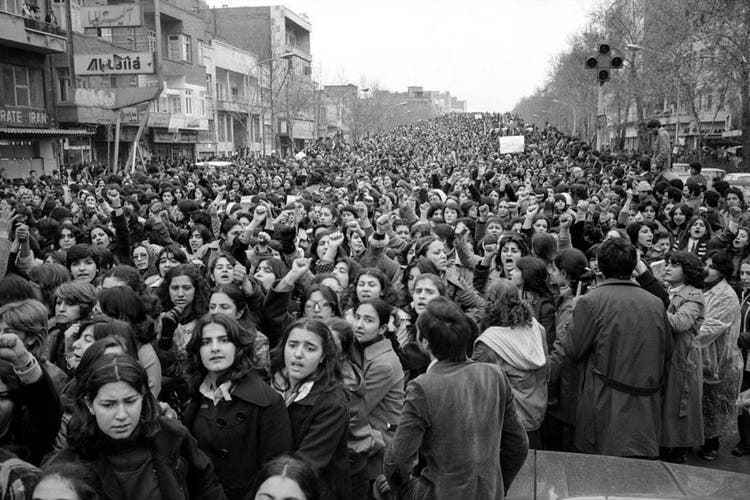
On March 8, 1979, crowds of women protest against having to wear a headscarf. Men have formed lines at the edge to protect the demonstrators from attacks.
The protests were so big that the new regime temporarily refrained from insisting on the compulsory hijab. But as early as July 1980, Khomeiny instructed ministries to ensure that women dressed in Islamic clothing. The government gradually banned unveiled Iranian women from society, and protests were suppressed. From the summer of 1981, the veil was enforced on the street with the help of the Revolutionary Guards and the Morality Police. Since 1983, it has been compulsory for all women and girls over the age of nine to wear a hijab.
To this day, Iranian women fight against their oppression and for the freedom to choose how they dress. The question of showing their hair in public is at the heart of this struggle for many. For them, the hijab is symbolic of all the injustice they have been experiencing for decades.
